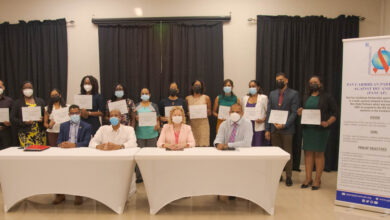KINGSTON, Jamaica — The number of babies born with HIV in Latin America and the Caribbean declined by 78 per cent between 2001 and 2013, according to a new report from the Pan American Health Organization/World Health Organization (PAHO/WHO) and the United Nations Children’s Fund (UNICEF).
The report: Elimination of Mother-to-Child Transmission of HIV and Congenital Syphilis in the Americas, takes stock of progress in the region’s countries toward the elimination of mother-to-child transmission of HIV and syphilis.
Using data from PAHO, UNICEF and UNAIDS, the report estimates that 10,700 babies were born with HIV in Latin America and the Caribbean in 2001.
By 2013, the number had declined 78 per cent to just over 2,300, representing around 5 per cent of all babies born in the region to mothers with HIV.
The countries and territories of Latin America and the Caribbean have set the collective goal of reducing that proportion to less than 2 per cent by 2015. So far, nine countries and territories have reached that goal: Anguilla, Barbados, Canada, Cuba, Jamaica, Montserrat, Puerto Rico, Saint Kitts and Nevis, and the United States.
“We need a final push to ensure that 100 per cent of pregnant women have access to sexual and reproductive health services, including HIV testing and antiretroviral treatment, which can save their lives and reduce the chances of transmitting the virus to their babies,” said Massimo Ghidinelli, chief of PAHO/WHO’s HIV/AIDS, Sexually Transmitted Infections, and Hepatitis Unit.
In 2013, 87 per cent of the 11 million women who gave birth in Latin America and the Caribbean attended at least four prenatal visits, a benchmark for adequate prenatal care. An estimated 74 per cent had access to HIV testing and counselling—up from 62 per cent in 2010—and 93 per cent of HIV-positive mothers-to-be received antiretroviral treatment, a significant increase over the 59 per cent who received treatment in 2010 and only two percentage points short of the target for 2015.






